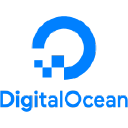I Grew My Paraphrasing API To $3.5K/Month [$0 Spent In Ads]
Hello! Who are you and what business did you start?
Hi, my name is Boulama and I’m the founder of Tinq.ai.
Tinq.ai is a ready-to-use NLP toolkit that allows the integration of Natural Language Processing capabilities into your app.
It is designed to be an intuitive and easy-to-integrate platform to assist you in producing automation solutions for tasks related to natural language processing.
Tinq.ai has several very popular products amongst our community: rewriter, sentiment analysis, entity recognition, and classifier. It was launched in private beta in July 2021 and has been accessible to the public since October 2021. The platform recently crossed the $3.5k revenue mark with 34 paying customers as of January 27, 2022.

What's your backstory and how did you come up with the idea?

Download the report and join our email newsletter packed with business ideas and money-making opportunities, backed by real-life case studies.

Download the report and join our email newsletter packed with business ideas and money-making opportunities, backed by real-life case studies.

Download the report and join our email newsletter packed with business ideas and money-making opportunities, backed by real-life case studies.

Download the report and join our email newsletter packed with business ideas and money-making opportunities, backed by real-life case studies.

Download the report and join our email newsletter packed with business ideas and money-making opportunities, backed by real-life case studies.

Download the report and join our email newsletter packed with business ideas and money-making opportunities, backed by real-life case studies.

Download the report and join our email newsletter packed with business ideas and money-making opportunities, backed by real-life case studies.

Download the report and join our email newsletter packed with business ideas and money-making opportunities, backed by real-life case studies.

















